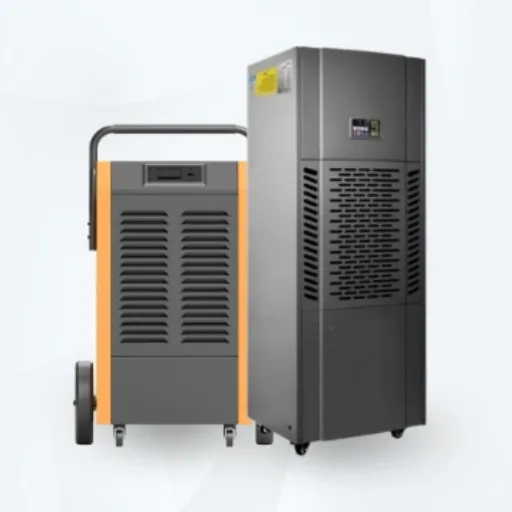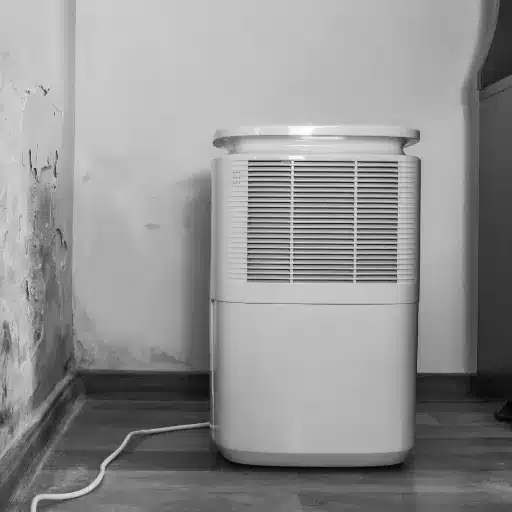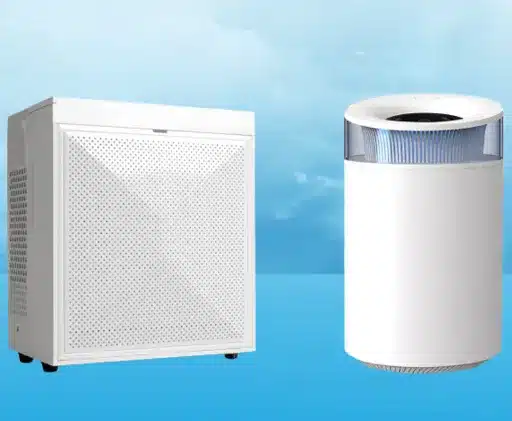When determining the difference between an air conditioner and a dehumidifier, one must consider the differentiating factors such as the device’s purpose, its function, and the impact on the energy consumed and utility payments. One uses an Air conditioner to keep the room temperature at a particular degree and a dehumidifier to get rid of the moisture in the room. Understanding the difference between appliances, their level of efficiency, and the cost incurred while running them is significant for a homeowner. This article will help people to understand which appliance solves the problem at hand while minimizing costs and being mindful of the environment. This article tends to breach the gap between disabling the utility tool and being in constant comfort.
How do air conditioners and dehumidifiers differ in function?
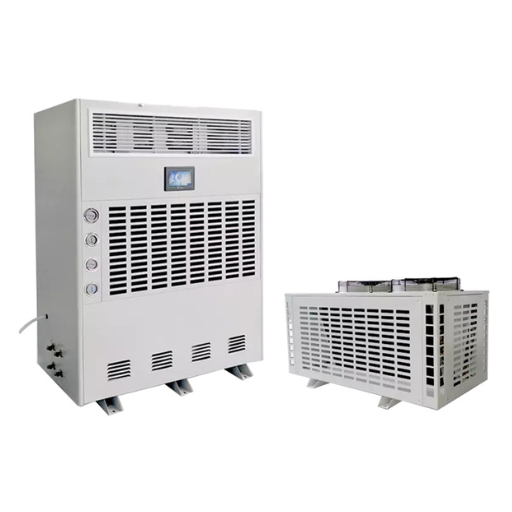
Air conditioners and dehumidifiers’ roles in air quality management are different. Air conditioners cool the air in the enclosed space by removing hot air and replacing it with cooler air, while also pulling out some humidity. Dehumidifiers work by pulling in humid air, condensing the water vapor, and then releasing drier air into the room, reducing the moisture in the air. Both machines have an impact on humidity levels, but air conditioners’ core role is temperature management and dehumidifiers’ core role is moisture management.
Clearing the main function of an air Conditioner
An air conditioning unit primarily cools a hot indoor area by removing heat from the room and moving it outside. The end result is that the chilled room air replaces the hot air. This is done through a series of cycles called the refrigeration cycle and it includes compression, condensation, and evaporation of a special liquid called refrigerant. The main function of an air conditioner is always temperature control, but within certain limits, the machine pulls moisture out of the air, hence dehumidifying the area.
In-depth research into the mechanisms of dehumidifiers
Moisture reduction using dehumidifiers is similar in principle to the refrigeration cycle used in air conditioners and works through air evaporation. A fan pulls in air with high moisture content. This air is then heated and passed over a cooled coil where the moisture condenses into a liquid state. The formed water is fed into a collection barrel or drained via a hose. The drier air is then reheated and released back into the atmosphere. Other essential variables are the efficiency factor, the energy used relative to the water removed, and the dehumidifier capacity, which is the number of pints or liters of water removed per day. A high-capacity model is effective in large spaces and extremely humid conditions. Efficient energy design ensures that minimum electrical power is used.
Air Conditioning Units Vs Dehumidifiers: Their Structures And Differences In Cooling Effects
The core difference between an air conditioner and a dehumidifier is their intended purpose. Air conditioners function by cooling the air as they dehumidify, while dehumidifiers do not cool the air effectively. Air conditioners are well-suited for hot and humid places since they use a refrigeration cycle to reduce room temperature. By contrast, dehumidifiers are meant to control the moisture content in the air to an ideal level so that dampness and molds do not form. However, they do not reduce air temperature much. The selection for one or the other depends on how much cooling or humidity control is required.
What are the energy costs associated with running a dehumidifier?

The operating costs for a dehumidifier depend on a unit’s power rating, local electricity rates, and the number of operating hours. Most dehumidifiers range between 300 – 700 watt-hours. Hence lower, lower-powered units are cheaper to run than their higher-powered counterparts. As an example, if a 500-watt dehumidifier is used for 8 hours a day, it would burn through 4 kilowatts hourly (kWh) a day. To counter these high costs, users can either set the device to optimal 30 to 50% humidity or use Energy Star-certified more efficient models. Effective maintenance, such as regularly cleaning the filters, can help improve energy efficiency.
Factors affecting the cost of running a dehumidifier
Various factors come into play for determining the cost of a dehumidifier. To start, the power rating is an obvious reason. How much does a unit use in wattage? High-wattage units will use more electricity than units on the scale’s lower side. For example, a unit rated at 700 watts will consume more power than a 300-watt unit over the same period. Another factor is how often these devices are operated and for what duration of time. Using the device continuously will significantly increase energy usage compared to default interment periods of use.
Furthermore, the dehumidifier’s performance, commonly signaled by its Energy Factor (EF), relates to how much water is removed for each kilowatt-hour (kWh) used. Most dehumidifiers with Energy Star certification nowadays possess higher EF ratings, which is advantageous for overall energy consumption. The regional costs of electricity impact the total operational costs as well: more expensive utilities cause higher monthly expenses. Finally, humidity levels in the air and the size of the room are some of the other external factors that determine how hard or how easy a dehumidifier will work, which may, in turn, impact its running costs and energy efficiency. A perfect match between the unit’s capacity and the room requirements guarantees efficiency and cost effectiveness.
Energy efficiency ratings for dehumidifiers
The energy efficiency ratings for a dehumidifier are set according to the energy consumption versus the work done ratio. A particularly prevalent index is the Energy Factor (EF), which indicates the water removed in liters or pints per kilowatt-hour (kWh) of electricity consumed. Higher EF values are indicative of more efficient products. Many appliances that are manufactured today bare the Energy Star logo due to their efficiency and power saving abilities relative to the standard devices available. While all these indicators offer some form of information on the energy efficiency of a given device, it is essential to use dehumidifiers that correspond well with the size and humidity of the area to minimize energy spending most effectively.
Getting Lower Energy Use While Dehumidifier Operating Tips
When dehumidifying, I try to dehumidify only when needed, so the unit is sized for the area and the energy usage is reduced. The filters and coils are cleaned regularly so that the unit always works efficiently. Also, when the physical circumstances seem to allow, such as windows being opened and exhaust fans being run, I set the device on the low moderation in order to make the work cut down on the equipment burden. Moreover, setting the device to a relative humidity of 30-50% also helps curb energy expenditure. Lastly, I buy devices with the Energy Star Certification, built to be highly effective while drawing less energy.
How much does it cost to operate an air conditioning system?
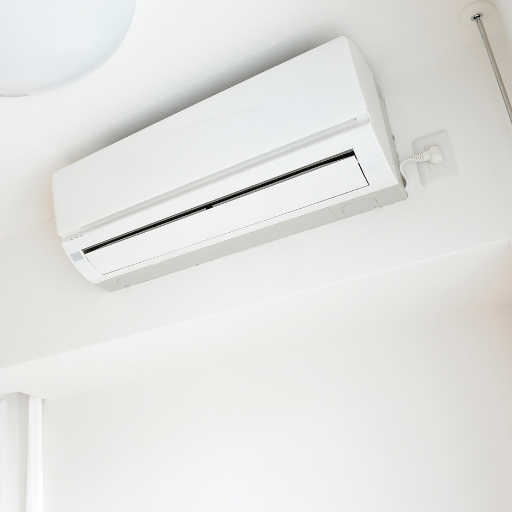
Operation costs associated with an air conditioning system are influenced by multiple variables including the local cost of electricity, the duration of usage per day, and electricity consumption metrics such as EER or SEER. Central air conditioners usually range from $0.06 to $0.88 per hour depending on how powerful and efficient the unit is. With these calculations, one can expect their monthly cost to range between 50 and 150 dollars around the peak summer months. Having a good insulation system, servicing the unit regularly, and installing programmable temperature controls can help to improve these figures.
AC units energy consumption
The energy consumption of air conditioning units will differ according to size, efficiency rating, and the cooling capacity required. Their energy consumption can vary from a few to several kilowatt-hours (kWh) daily. A typical central air conditioner can consume anything from 1.5 to 5 kWh of electricity per hour, largely depending on the model and the system’s capacity. To minimize energy consumption of such units, it is best to put in units with a higher SEER rating to consume less energy for every unit of cooling output. Moreover, adequate airflow, duct sealing, and system sizing specific to the home’s cooling requirements must be done to meet and enhance energy efficiency and reduce energy demand.
Characteristics that affect the cost of energy for the air conditioned unit
In energy costs, there are a number of factors that account for its differences. The unit’s size and capacity greatly affect energy consumption since larger units usually require more power. The Seasonal Energy Efficiency ratio (SEER) rating is also essential since the lower the rating, the greater the energy needed for cooling. Also essential are how well the house is insulated or how much the insulation will increase the energy cost since low insulation decreases the temperature and requires the air conditioner to work overtime. Also, outside temperatures can affect a home’s energy cost since hotter areas require running cooling systems more. Finally, maintenance such as filter cleaning and servicing the unit regularly will improve the unit’s functionality, helping manage energy costs.
Techniques for Developing AC Energy Efficiency
- Cut back on energy consumption dramatically by switching to an air conditioning unit that has a higher SEER rating.
- Regularly conduct routine maintenance procedures by replacing dirty filters and calling for professional assessment.
- Reduce air conditioning unit powering up by enhancing cool air insulation throughout the house.
- Program thermostats to manage cooling time and ensure the unit does not operate when the house is empty.
- Efficiently close off windows, doors, and ducts to ensure air leakage does not lower cooling effectiveness.
Can using a dehumidifier help reduce air conditioning costs?

Dehumidifiers are great energy-saving devices as they reduce the humidity in a room. This makes it easier to cool the air, thus reducing the need and cost of running an air conditioner. However, dehumidifiers do use energy, so it’s beneficial to utilize the appliance and use more energy-efficient models strategically. These models, combined with the decreased workload on the air conditioner, eventually help in reducing energy consumption and saving costs over time.
Correlation between humidity and perceived temperature
There is a strong connection between humidity and perceived temperature because moisture affects the body’s temperature regulation and cooling through sweat evaporation. When relative humidity is high, temperature feels hotter than it is because the rate of evaporation dips. Consider an example where at 85°F the relative humidity is 70%, the air temperature “feels-like” or heat index is likely to increase to near 95°F. The abuse of the heat index supports this argument – this measures the relative air temperature and the air’s confidence to hold moisture to provide some rough estimate of human comfort. Lowering humidity not only increases comfort, but also decreases the cooling load on air conditioning equipment, which is more cost effective. Based on comfort and energy balance, keeping indoor humidity between 30%-50% is recommended.
The Role of Dehumidification in Air Conditioners
Incorporating dehumidifiers into an air conditioning system enhances the performance and overall comfort of the system. When excessive moisture is eliminated, the air conditioner can work more effectively. Most importantly, humidity does not allow a room to feel thermal comfort. Indoor moisture that is not adequately controlled can result in mold growth or dampness. Dehumidifiers are able to maintain the necessary indoor moisture.
Furthermore, a system that lowers the latent heat load dehumidification, can also decrease energy consumption. As a result, it helps to save money, enhance the system’s lifespan, and enjoy an improved quality of life. Effective control of both temperature and humidity in the indoors can be achieved with the combination of these systems.
Estimating potential energy savings from combined use
The pairing of AC systems with dehumidifiers can lead to substantial energy savings. When used together, dehumidifiers can effectively reduce the AC’s latent heat load, which increases its overall efficiency of the ACs and decreases its run time. This method is more efficient because it directly cools high humidity areas, lowering the energy needed for cooling. Additionally, better humidity control mechanisms may ensure a more consistent energy efficiency over the long run, decreasing the strain on HVAC parts and prolonging their lifespan. In the long run, these combined systems can significantly reduce energy costs while maintaining necessary indoor comfort.
Which option is more cost-effective for humidity control?
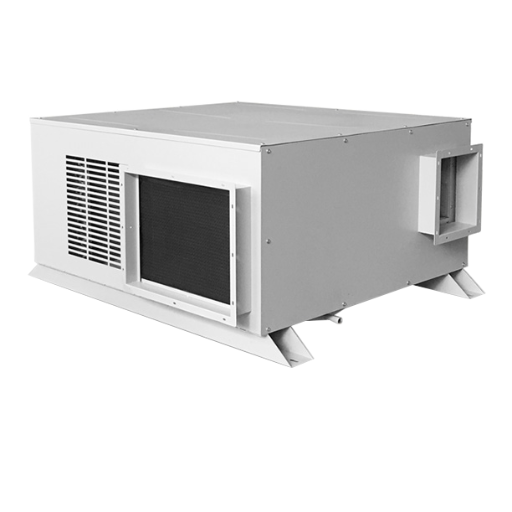
It is often the case that considering the best economic option for humidity control depends on particular conditions of the environment and the system’s requirements. These devices are usually less expensive and efficient for direct or spot humidity control than other types. Therefore, they are appropriate for use in limited areas or specific locations. Nonetheless, combining a dehumidifier and an air conditioning system is economically and energetically efficient for dehumidifying large spaces, as it benefits from the fact that cooling passes through the air handler. This arrangement tends to be costlier to set up, but it usually yields lower operational expenditures. The balance between area sizing and consumption requirements is fundamental for selecting the most economical option.
Energy use comparison: dehumidifier and AC in dry mode
About energy consumption between basic dehumidifiers and air conditioning systems set on dry mode, the difference is in the focused activities while operable and their effort. These devices are more efficient because they are explicitly designed to draw out humidity in the air through a smaller compressor and fan that consumes less energy. Lower capacitate and low-range models typically utilize 300 – 700 watts. In contrast, dry mode AC units employ temperature control and humidity control, switching compressors on and off, increasing energy consumption. On average, standard home unit’s power usage is between 800 – 1,600 watts.
Nonetheless, the independent dehumidifier tends to be more economical, especially with lower temperatures and moderate humidity levels. At the same time, the dry mode AC benefits larger rooms that need both cooling and humidity removal. Selection should also consider the square area of the room to be serviced, humidity to be controlled, and the efficiency ratio EER of the device, as a higher ratio indicates enhanced energy performance, which may be more cost-effective.
Evaluation of Long-term Costs and Benefits
In my assessment of long-term costs and benefits, I particularly consider operational costs and the expected lifetime of the unit. Undeniably, Energy Efficient Rating and Energy Expenditure Efficiency Ratio save money over the long run, even though the initial purchase cost may be higher. This is because their operation optimally performs, causing less physical stress and lowering maintenance and repair costs. Conversely, other models can be constructed to have low EER ratings, but their EER rating may not be cost effective in the long run because of heightened servicing and energy costs. About the factors mentioned, one model’s approach may indeed require more IT and humidity controls. Therefore, I must choose a model that allows them to achieve the desired level of performance, durability, and cost optimization.
Factors to consider for subdivided climatic regions
HVAC systems selection and effectiveness rely heavily on climate zones. In hotter regions, the primary requirement for air conditioning is cooling and simultaneous dehumidification, while in colder areas, low-temperature operated heat pumps are critical during peak temperatures. For the areas that experience medium temperature levels, supreme EER ratings in the units that provide heating and cooling are needed. Effective insulation of the building and sealing of air leaks is also important in minimizing the overall energy consumption to operate the HVAC system, which is climate dependent.
How do air conditioners and dehumidifiers impact indoor air quality?
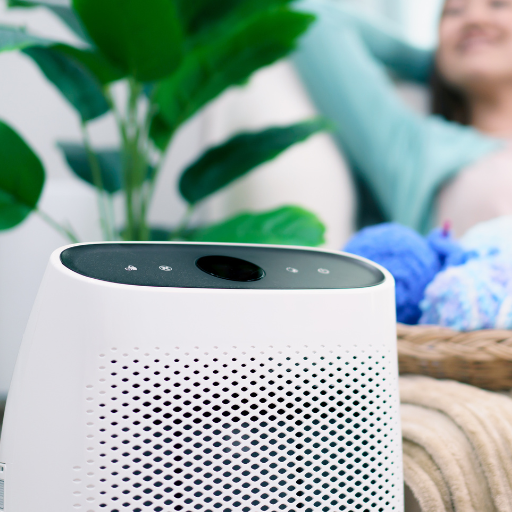
Air conditioners and dehumidifiers impact the indoor air quality by controlling humidity and contaminant levels. Contaminants such as molds, mildew, and dust mites that cause allergies and other respiratory ailments are eliminated by dehumidifiers which remove excess moisture. Both air conditioners and air coolers draw in air containing dust, pollen, and other pollutants which are separated out as the air is cycled through the system. Nevertheless, maintenance of the system is crucial, including filter cleaning and replacement, condensation tray emptying, and decontamination of the systems to prevent bacteria and mold from forming and degrading air quality. This results in better air quality and increased comfort and health indoors.
Impact on allergens as well as mold proliferation
Operations and Services of air conditioners and dehumidifiers affect allergens and mold growth. Relative humidity exceeding 60% is more favorable for mold and dust mites. Competitors of dehumidifiers claim that their products maintain indoor relative humidity between 30% and 50% because it is considered comfortable and minimizes the proliferation of allergens. Air conditioners, provided they are in good working order, further assist by lowering indoor relative humidity and collecting dust, pollen, pet dander, and other particles in their filters. But, the other side of the coin is that dirty filters or poorly serviced units can become sources of dry spores and other allergens. This is a negative benefit. Regular cleaning of filters, air ducts, and condensation trays as well as the manufacturer-recommended service intervals are necessary to maintain effective allergy and mold suppression.
Enhancing Comfort Levels With Control of Humidity
One of the most important ways to improve comfort indoors and manage air quality is humidity control. When the relative humidity (RH) is adequately maintained between 30% and 50%, it not only limits the growth of allergens but also helps minimize medical complaints like dry skin or damaged respiration system due to excessively moist or dry air. Proper setting and servicing of air conditioners and dehumidifiers is thus necessary. For instance, Dehumidifiers usually contain hygrometers, making it possible to set the desired indoor RH accurately. Additionally, air conditioning systems reduce excess moisture by condensation. However, their performance in removing extra moisture is subject to their cooling capacity, airflow rates, and filter efficiency. One crucial technical parameter is the air conditioner’s SEER rating, which indicates the overall energy performance. Another one is the dry of the dehumidifier, often expressed in pints per 24 hours. For the desired results to be achieved, it is essential that the devices are appropriately sized for the space they serve and proper maintenance protocols are followed.
Balancing air quality with energy efficiency
The balance of air quality and energy efficiency is achieved by formulating policies to maximize the quality of ventilation and minimize the energy consumed. Using high-efficiency HVAC systems with advanced air filtration technology can significantly enhance indoor air quality and greatly reduce energy consumption. Demand-controlled ventilation systems that vary airflow according to occupancy also minimize energy expenditures. Optimal performance can be achieved through proper insulation, air sealing, and maintenance of the ventilation systems. This balance may also be achieved without harming the environment or human health by selecting energy efficient devices and using renewable energy sources.
Reference sources
Frequently Asked Questions (FAQs)
Q: How do air conditioners work to cool and dehumidify a room?
A: Air conditioners work by pulling warm air from your home, passing it over cold evaporator coils to cool it, and then circulating the cooled air back into your space. During this process, moisture in the air condenses on the cold coils, effectively dehumidifying the air. The condensed water is then drained away, leaving you with cooler, drier air inside your home.
Q: What’s the main difference between an air conditioner and a dehumidifier in terms of function?
A: The primary difference is that an air conditioner is designed to cool the air while also removing some moisture, whereas a dehumidifier’s main function is to remove excess moisture from the air without significantly altering the temperature. Air conditioners also use a compressor and condenser to cool the air, while dehumidifiers typically use a fan to circulate air over refrigerated coils to condense moisture.
Q: When comparing energy efficiency, which is generally more cost-effective: an air conditioner or a dehumidifier?
A: When comparing energy efficiency, dehumidifiers are generally more cost-effective for moisture removal alone. If your primary goal is to reduce humidity, especially in humid basements or small spaces, a dehumidifier would typically use less energy than running an air conditioner solely for dehumidification. However, if you need both cooling and dehumidification, an energy-efficient air conditioner might be the better choice.
Q: Can using a dehumidifier save energy compared to an air conditioner in certain situations?
A: Yes, using a dehumidifier can save energy in certain situations, particularly in mild but humid climates. By removing excess moisture from the air, a dehumidifier can make your home feel more comfortable without the need for extensive cooling. This can be especially effective in basements or during shoulder seasons when it’s not hot enough to justify running an air conditioner but the air is still uncomfortably damp.
Q: How can I evaluate my home to determine whether I need an air conditioner or a dehumidifier?
A: To evaluate your home air needs, consider the following factors: your local climate, the specific issues you’re experiencing (heat, humidity, or both), the size of the space you need to treat, and your budget for both purchase and operating costs. If you’re primarily dealing with high humidity without excessive heat, a dehumidifier might be sufficient. If you’re facing both high temperatures and humidity, an air conditioner would be more appropriate. For a professional assessment, consider contacting an HVAC specialist.
Q: Are dehumidifiers the better choice for basements and why?
A: Dehumidifiers are often the better choice for basements, especially in humid climates. Basements tend to be naturally cooler but prone to moisture issues due to their underground location. A dehumidifier can effectively remove excess moisture from the air, preventing mold growth, musty odors, and potential water damage without unnecessarily cooling the already cool space. This makes dehumidifiers more energy-efficient for basement use compared to air conditioners.
Q: How do I decide between choosing a dehumidifier and an air conditioner for my home?
A: When deciding between a dehumidifier and an air conditioner, consider your primary concern. If your main issue is high humidity causing discomfort or potential mold growth, a dehumidifier would be the better choice. If you’re dealing with both high temperatures and humidity, an air conditioner would be more suitable. Also, consider the size of the space, your budget, and energy costs. For whole-house solutions, a central AC system might be more efficient, while for single rooms or small areas, a portable dehumidifier or window AC unit could suffice.
Q: How can I contact you for more information about home air solutions?
A: We’d be happy to provide more information about home air solutions tailored to your specific needs. To get in touch with our team of experts, please visit our website and fill out the contact form, or call our customer service line. You can also email us directly at our support address. Contact us today for personalized advice on whether an air conditioner or dehumidifier is the best choice for your home!

